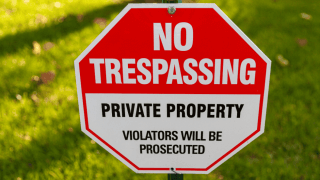May 24, 2023
Have you ever found yourself staring at those overhanging tree limbs from your neighbor’s property, wondering if you have the right to trim them? It’s a common concern among homeowners who need help with their rights and responsibilities regarding encroaching trees.
In this article, we’ll explore the topic and provide helpful information backed by statistics and reliable sources to help you navigate this situation. So let’s see if you can cut those pesky tree limbs hanging over your property.
Understanding Property Rights and Tree Encroachment
Property rights can be complex, but some general principles apply when it comes to tree encroachment. As a homeowner, you can maintain the airspace above your property and prevent encroachment from neighboring trees. However, it’s essential to approach the situation with caution and respect for the law.
The Right to Trim Overhanging Tree Limbs
In most jurisdictions, homeowners can trim tree limbs that extend over their property line. This is commonly known as the “self-help” doctrine. However, there are a few essential considerations to keep in mind:
- Good Pruning: You have the right to trim only the parts of the tree that are encroaching onto your property. It’s vital to exercise reasonable judgment and avoid causing unnecessary harm to the tree.
- No Trespassing: You cannot enter your neighbor’s property without permission while trimming the limbs. You must perform the trimming from your side of the property line.
- Consult Local Laws: It’s crucial to familiarize yourself with local ordinances and regulations regarding tree trimming. Some areas may have specific rules, such as requiring a certain distance from the trunk or obtaining permits for extensive pruning.
Statistical Data on Tree-Related Property Disputes
To provide a broader perspective on this topic, let’s look at some statistics related to tree-related property disputes:
- According to the American Bar Association, tree disputes are among the most common neighbor disputes in the United States.
- A study by the University of California found that over 80% of tree disputes arise from overhanging branches.
- The National Association of Realtors reports unresolved tree disputes can negatively impact property values and create a hostile neighborly environment.
- In a survey by Angie’s List, 52% of homeowners indicated that they had experienced a dispute with a neighbor regarding trees or landscaping.
- The International Society of Arboriculture recommends open communication and seeking professional arborist advice to resolve tree-related conflicts.
Seeking Professional Advice and Mediation
Sometimes, seeking professional advice or mediation services to address tree-related conflicts may be beneficial. Consulting with a certified arborist or a lawyer experienced in property law can provide valuable insights into your rights and potential courses of action. Mediation services can also facilitate productive discussions between neighbors, leading to mutually satisfactory solutions.
Promoting Neighborly Relations
While you have rights regarding tree trimming, it’s essential to approach the situation with a neighborly mindset. Open communication, respectful dialogue, and compromise can go a long way in resolving conflicts amicably. Consider discussing your concerns with your neighbor and exploring mutually agreeable solutions that preserve the beauty and health of the tree while addressing your concerns.
Conclusion
In conclusion, it’s always best to seek professional advice if you need more clarification about your rights and responsibilities when cutting tree limbs that hang over your property. Strobert Tree Service is here to help! With their expertise in tree care and extensive knowledge of local regulations, they can provide the guidance you need. Feel free to contact them and ensure you handle the situation appropriately. Remember, respecting your property rights and maintaining good neighborly relations is essential.
When in doubt, consult professionals and seek legal advice to ensure you are well-informed about your specific rights and obligations in your jurisdiction.











